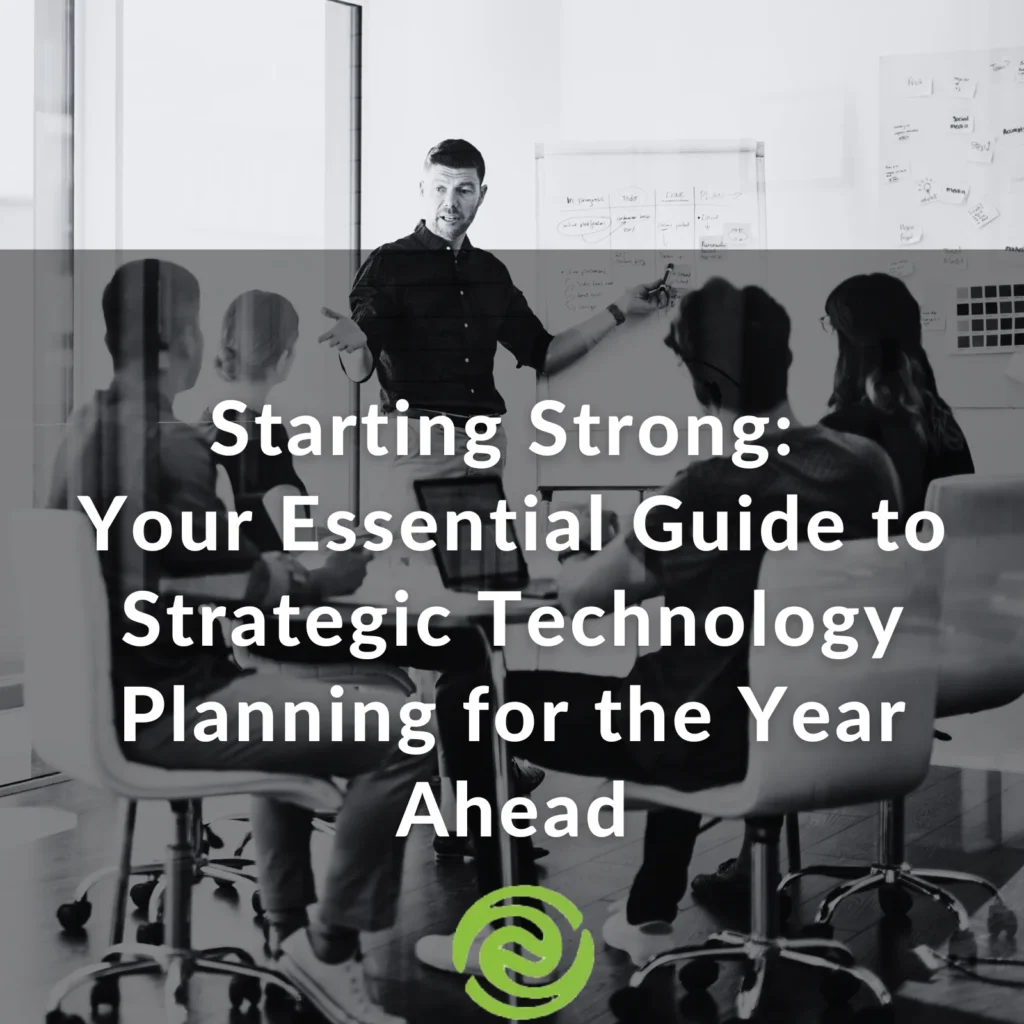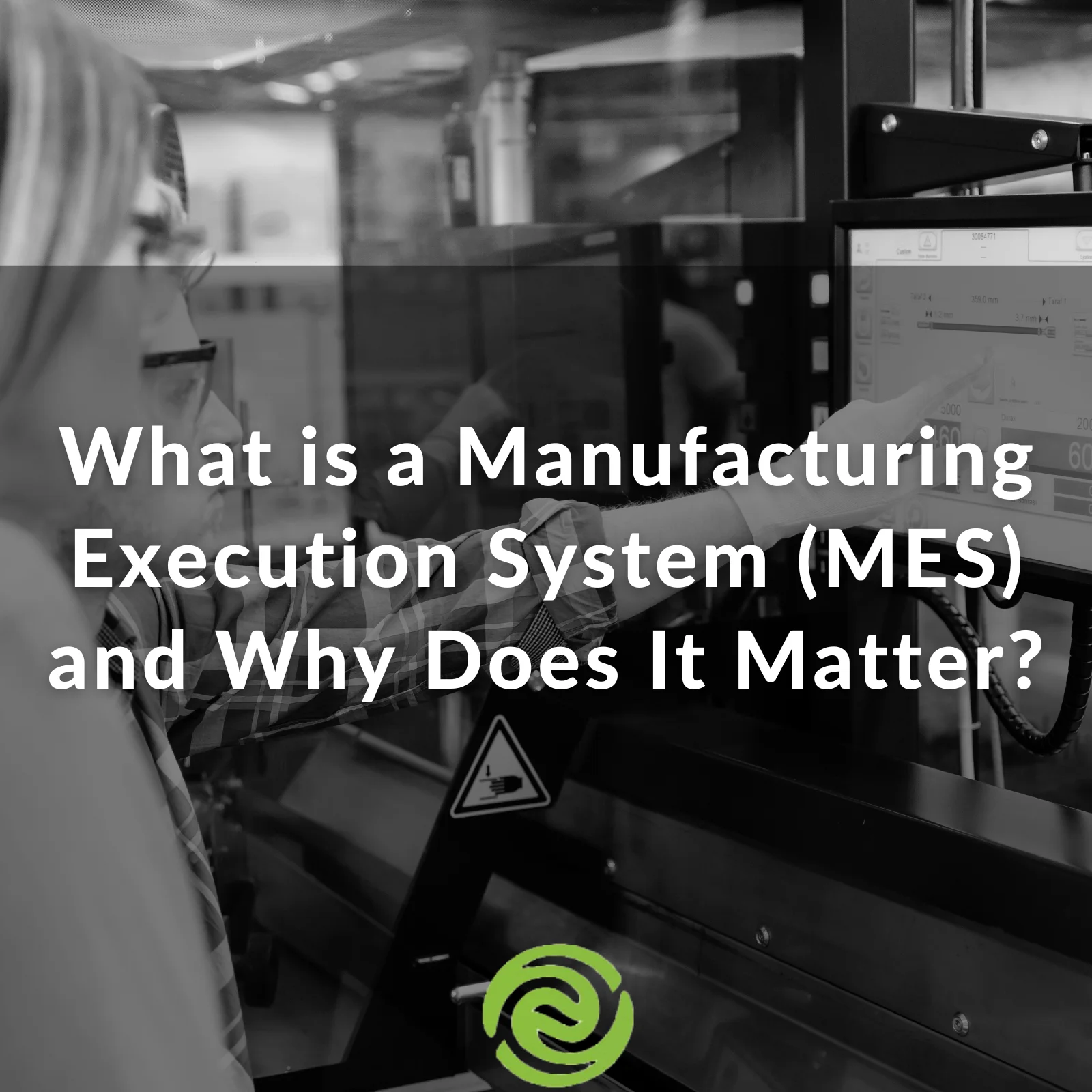In the modern manufacturing landscape, companies are facing unprecedented pressures to increase productivity, maintain product…
Starting Strong: Your Essential Guide to Strategic Technology Planning for the Year Ahead
As we approach the end of the year, it’s essential to focus on next year’s priorities, strategies, and budgets, and don’t forget to make technology part of your planning. Don’t make the mistake of overlooking your software and tech infrastructure. In today’s fast-paced tech landscape, “If it’s not broken, don’t fix it” no longer applies.

For many years, companies have been able to slip by using outdated tech. But today, smart organizations are realizing technology is not just a tool, but a driver of strategic growth. Delaying tech investments often means greater costs down the line, and the risk of falling behind your competition. Staying near-current is crucial. While you don’t need to chase every new trend or be on the bleeding edge of tech, maintaining updated systems will make a world of difference in your organization.
The first step? Identify automation opportunities that will drive efficiency, especially in light of labor shortages and heightened competition. With less than one available worker for every open job, automation has become a necessary solution to keep productivity and efficiency high.

Consider framing your technology initiatives as pebbles, rocks, and boulders: minor fixes, mid-level projects, and major upgrades. Often, the larger “rocks” – crucial projects that impact strategy and efficiency – can stay on the to-do list far too long, holding back your company’s progress. Unpacking priorities to identify what will truly move the projects forward is a step that people often skip when planning for the next level of business.
Pinpoint areas where automation and other digital tools can streamline operations and bring long-term benefits. Today’s technology landscape offers a range of solutions for moving connections from leads to closed deals, enhancing customer relationships, managing your business processes, and improving system efficiency. The challenge is determining which tools make sense for your business now and which ones will support your goals over the next five years.
The Future Of Technology
The ways we do business are evolving quickly, and we have more options (and opportunities) than ever before due to the influence of technologies like Web 3.0 and Blockchain.
We’d be remiss not to also mention the power of AI in modernizing business operations. Artificial Intelligence has been around for 75 years, but in recent years it’s really taken hold. It has been widely adopted by businesses within their systems and processes, and how they conduct themselves in today’s digital landscape. AI’s role is to rapidly perform tasks that previously required human intelligence. It’s a tool that, when used properly, has the ability to increase efficiency, increase bottom lines, and help companies stay competitive.

By thoughtfully embracing technology and integrating strategic automation, AI, and efficient systems, you’re not just updating processes, you’re laying the groundwork for sustainable growth and success long term.
To dive in deeper, let’s start with one of the most critical systems to have within your business… ERPs or core business systems. An ERP isn’t just a tool; it’s the backbone of your business operations. As you evaluate ERP options, keep these five critical factors in mind:
- Reliability, Stability, and Longevity – Choose a provider with a proven track record, strong reputation, and the capacity to support your business long-term.
- Efficiency Boosts with Minimal Disruption – Aim for a system that maximizes operational efficiency without disrupting existing workflows.
- Industry-Specific Experience – Look for vendors experienced with similar industry business models, as they’ll better understand your unique needs.
- Seamless Integration – Ensure the ERP integrates easily with other tools in your tech stack for a streamlined workflow.
- Implementation & Ongoing Support – Opt for a solution that includes not only implementation but also dedicated support for continuous improvement.
Integrating Systems with APIs for Cohesive Operations
Another essential way to streamline operations is through Application Programming Interfaces (APIs). APIs enable different software systems to communicate and work together seamlessly, acting as connectors that allow data to flow freely between applications. APIs also facilitate integration with third-party systems, ensuring your technology stack operates cohesively in a fast-paced business environment where smooth communication between applications is critical.
The Role of MES in Modern Manufacturing
For manufacturers, reliable data from the plant floor is essential. With pressures to enhance productivity, maintain quality, and reduce costs, a Manufacturing Execution System (MES) is no longer a luxury, it’s vital. An MES helps manage complex operations efficiently, minimizes human error, and supports scalability, making it an indispensable tool for manufacturers looking to stay competitive.

Choosing the Right Development Path: Build, Buy, or Both?
Determining your technology approach is key, and we break it down into three options: Build, Buy, or Both. Should you invest in a pre-built solution to fit your needs, or would a custom-built application better deliver the flexibility you require? In some cases, combining both strategies can deliver the best results.
What does the app design and development process look like and how does the journey begin?
If you’re considering custom software or app development, it’s essential to assess the potential investment involved. The complexity and functionality of your software directly influence cost and timeline. Simply put, the more an app or solution needs to do, the longer it will take to develop. Starting with clear priorities and understanding your options will set you up for success. To successfully navigate technology projects, it’s important to understand the key players involved in the development of your dream.
Technology isn’t just an operational tool, it’s a strategic asset that can drive growth and competitive advantage. Without adaptation and innovation, businesses risk falling behind. It’s essential to incorporate your technology goals into a strategic multi-year plan.
So, how can you effectively navigate the digital transformation journey? Start by taking a step back and planning with intention. Audit what you have, how systems (including legacy systems) are working now, and how they need to adapt for the plan going forward. Here’s your high-level overview on the steps you need to consider when crafting a 5-year technology strategy.
Start with a Vision
Envision where you want your technology to take your business over the next five years. Map out big ideas and strategic goals that align with future advancements, like Web 3.0 or AI-driven solutions.
Focus on Efficiency and Adaptability
Evaluate your current tech stack critically to identify bottlenecks, areas for automation, and ways to increase efficiency. Determine how each component supports productivity and flexibility for your team.
Build an Integrated Tech Ecosystem
Centralize your tech around core systems (e.g., ERP) and determine how other essential tools (like CRM, HRIS, and analytics) fit into this ecosystem. Plan for integrations and APIs to enable seamless connectivity across all platforms.

Involve Your Team in the Process
Your end-users offer valuable insights. Gather feedback from each department on what’s working, what needs improvement, and what should change. This collaborative approach helps ensure the plan meets real operational needs.
Prioritize, Execute, and Review Regularly
Set priorities and create a realistic timeline for each phase of implementation, focusing on quick wins to demonstrate value. Regular check-ins and adaptability are crucial for staying on track and adjusting as needed to stay ahead.
The Bottom Line… Begin With The End In Mind
As you’ve seen, the possibilities for a transformative technology strategy are vast, and it’s normal to feel a bit overwhelmed about where to start. You’re not alone in this journey. Our mission is to ensure you hit your goals for the upcoming year and beyond. Let us help you begin with the end in mind and work backward to break down the options and prioritize what will make the most impact for your business. Contact us today to discuss your unique needs and develop a clear, actionable plan for the future. Together, we’ll build a technology roadmap that drives your success.





